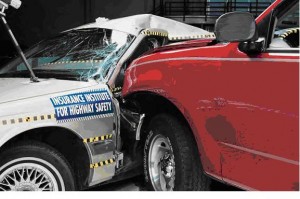
While safety research is ongoing, the seat belt remains the single most effective life saving device.
The news is leaking out, gradually, but no one is paying much attention amongst all the other drama on the automotive scene these days: driving on U.S. highways is getting significantly safer.
I can’t claim any credit for this discovery myself, though I have been more than casually interested in car safety for more than 50 years, when I earned my first Page One by-line story in the Miami Daily News by reporting on a six-fatality crash early one morning on a Florida Everglades highway. The credit for this safety news goes to Matt Helms, the “driving columnist” for the Detroit Free Press, who usually reports on area road repairs and traffic law interpretations.
According to Helms, the U. S. Department of Transportation has revealed that highway crash fatalities for the first ten months of 2008 came to an unofficial 31,110, a significant 10% drop from 34,502 recorded in the same period the year before. The National Highway Traffic Safety Administration (NHTSA) won’t report final numbers for two or three months yet, but the trend pointing to fewer than 40,000 highway deaths in 2008 is irreversible.
Further, the rate of deaths per million miles driven also has continued to drop, as it has for almost every year since long before NHTSA was formed in the aftermath of the Ralph Nader debacle of the mid-1960s.
Why the drop?
One can only speculate. For one thing, fewer miles were driven because of monstrous increases in gasoline prices for most of 2008. And many drivers probably traveled more slowly to conserve fuel, too. You can argue whether “Speed Kills,” but the stats are against you because of the laws of physics, though safety experts point out that speed relative to other traffic and conditions is the key rather than absolute speed.
But that’s only part of the story, and of course cause-and-effect is hard to measure. Clearly, cars are inherently safer – less prone to get in crashes and more forgiving when crashes do occur. You can credit NHTSA vehicle safety regulations for some of this, but much it is just the normal course of engineering improvements and refinements. And over the long run, today’s Interstate Highway System is measurably safer than the older highways they displaced, though most of the benefits were seen years ago.
Then there’s the increased attention against driving while impaired by substance abuse, largely alcohol or in worst case scenarios, combination of alcohol and drugs. I personally believe that advocacy by Mothers Against Drunk Driving (MADD) has had an effect, but it would be hard to prove. Some jurisdictions are imposing booze-sniffing ignition interlock devices on repeat drunken-driving offenders, which clearly is beneficial, particularly because the proportion of recidivism is unfortunately high among alcoholics. Drivers previously convicted of operating under the influence stand out among those causing subsequent fatal accidents.
More strenuous rules for young drivers to become licensed probably helps, too. Unfortunately the combination of inexperience, immaturity (“We’re gonna live forever” and “I dare ya”) and exposure to alcohol and drugs makes the 18-25 age range those most likely to lose their lives in traffic accidents.
The factor standing out the most in auto safety, however, is the almost unbelievable rate of safety belt usage by the American public, said by the DOT now to be 83%. A third of a century ago, it was more like 10 per cent, and no one-especially government officials and self-proclaimed safety advocates-thought it could ever be significantly improved. From the beginning-Ford’s Safety Package for 1956 models-and continuing, safety belts have been hands down the most effective automotive safety device.
